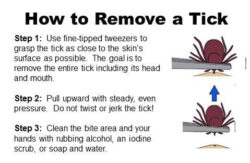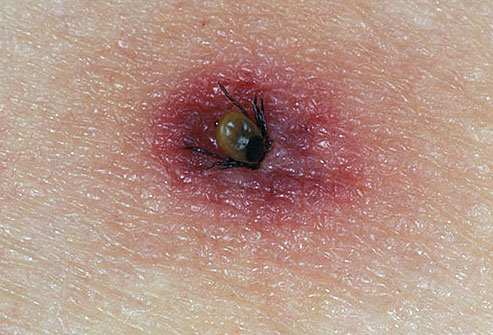Ticks Suck! No outdoor sportsmen enjoy ticks. They may have a role in the ecosystem but… Anyway, Ticks seem to show up in early May. Turkey hunters often end up as prime meals.
Ticks haunt tall grass and forests. These blind critters wait ankle high with their front legs extended. When a human, pet, or critter brush by, they hook onto them for a free ride and meal. Ticks are not insects. They are more like spiders, scorpions, mites, or arachnids. They have 4 pairs of legs and no antennae. Where you find one you will find many.
These blood sucking creatures require blood to survive. Deer ticks get their name from being found on white-tailed deer. Any small mammal will supply a meal to a tick. Mice, squirrels, rabbits, birds, and of course hikers. Deer ticks are tiny and may be as small as a pin head.
Ticks wait patiently for a host to pass by. Their hooked legs attach easily to hair or clothing. Since they have no wings and can’t jump, they “Quest”, or ambush their quarry.
Once a tick is on a pet or clothing, they seek a warm, moist destination where they can bury their head into soft tissue, they have a mouth loaded with bacteria and an anti-coagulant. This allows them to keep the free flow of blood without any clotting.
Tick bacteria are deadly to animals and humans. Rocky Mountain Fever, Lyme’s Disease, and other issues are easily passed to a host. Huge doses of antibiotics are needed to cure the infections. It is important to not leave the tick’s head embedded in the skin when removing a hungry tick.
Many methods of tick removal are not recommended. Traditionally, some first aid suggested that you dig the tick out and allow the wound to bleed. Others touch the tick with a hot, burned-out match. This will often cause the tick to vomit their toxic bacteria into the host. Not a good idea.
Instead, try using Vaseline to cover the tick. Once the tick can’t breathe, they will pull out their head and seek another area. Once they move out of the host, dispose of them. If the tick is really dug in, it is best to see a doctor for removal. Clean and disinfect the area thoroughly.
Prevention is a smarter approach. Use tick repellent sprayed around cuffs and ankles. Tick inspections will discover ticks before they dig in. Shake out any clothes before putting them back on when camping. Search socks and boots. Ticks can walk and seek warm locations, hoping to find a meal. Pets can easily spread ticks around. Search the pets and look for sores, or bumps, where a tick may be embedded. Ticks can also embed in the gums, near teeth. Look in hair, behind ears, under arms, navels, between toes, etc.
We often feel the tick marching along limbs. Remove with a tissue and dispose of them.
Montana Grant



